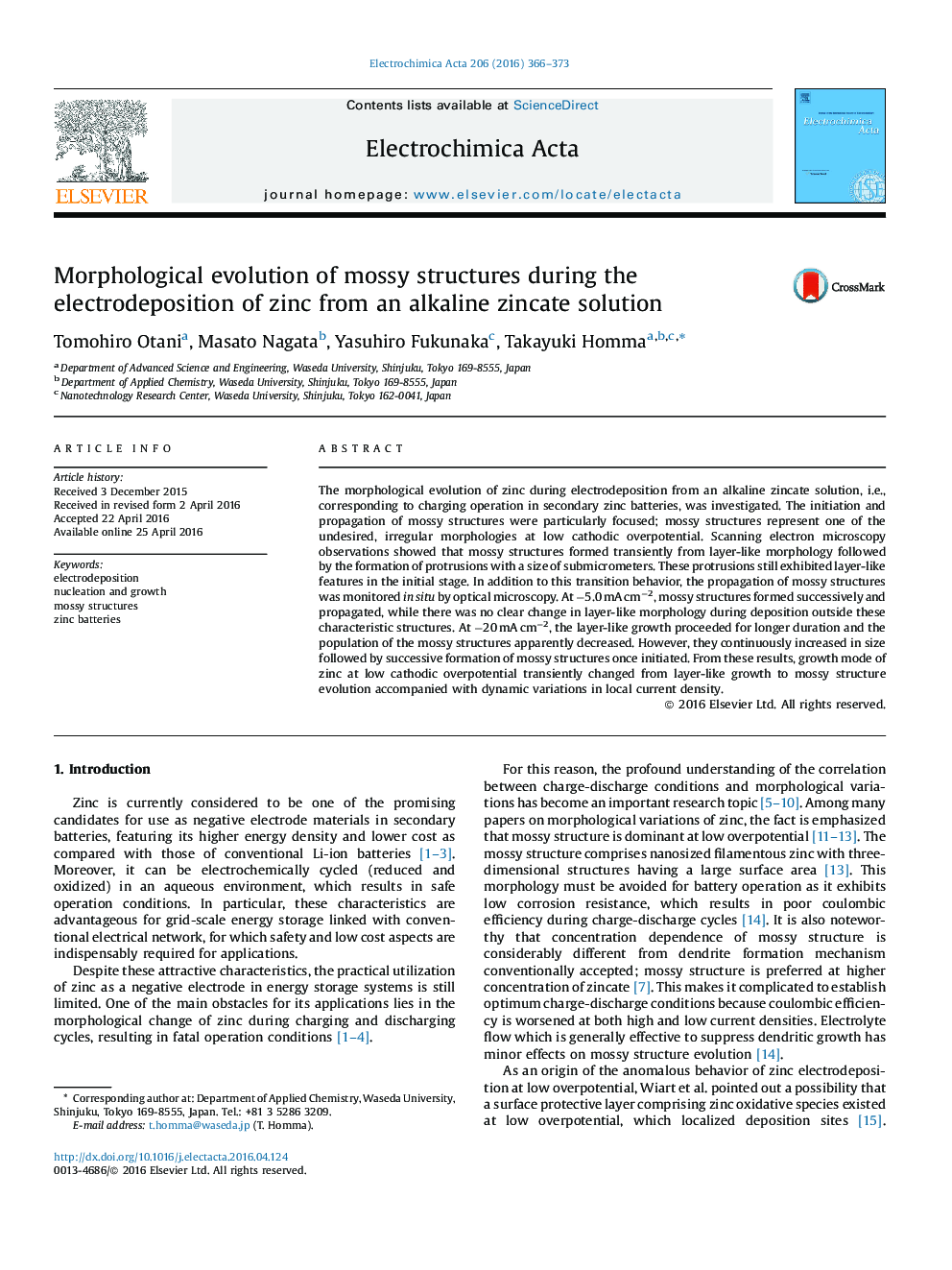| Article ID | Journal | Published Year | Pages | File Type |
|---|---|---|---|---|
| 6607345 | Electrochimica Acta | 2016 | 8 Pages |
Abstract
The morphological evolution of zinc during electrodeposition from an alkaline zincate solution, i.e., corresponding to charging operation in secondary zinc batteries, was investigated. The initiation and propagation of mossy structures were particularly focused; mossy structures represent one of the undesired, irregular morphologies at low cathodic overpotential. Scanning electron microscopy observations showed that mossy structures formed transiently from layer-like morphology followed by the formation of protrusions with a size of submicrometers. These protrusions still exhibited layer-like features in the initial stage. In addition to this transition behavior, the propagation of mossy structures was monitored in situ by optical microscopy. At â5.0Â mAÂ cmâ2, mossy structures formed successively and propagated, while there was no clear change in layer-like morphology during deposition outside these characteristic structures. At â20Â mAÂ cmâ2, the layer-like growth proceeded for longer duration and the population of the mossy structures apparently decreased. However, they continuously increased in size followed by successive formation of mossy structures once initiated. From these results, growth mode of zinc at low cathodic overpotential transiently changed from layer-like growth to mossy structure evolution accompanied with dynamic variations in local current density.
Related Topics
Physical Sciences and Engineering
Chemical Engineering
Chemical Engineering (General)
Authors
Tomohiro Otani, Masato Nagata, Yasuhiro Fukunaka, Takayuki Homma,
